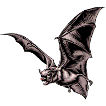Museum, University of Nebraska State

University of Nebraska State Museum: Mammalogy Papers
Document Type
Article
Date of this Version
6-1980
Citation
Carnegie Magazine (June 1980) 54(6): 30-36.
Abstract
The Section of Mammals at Carnegie Museum of Natural History is responsible for the care of the collections of Recent mammals, and research on these collections. "Recent mammals?!" The capitalized word "Recent" refers to the geological time period since the last ice age (about 10,000 years ago) until the present time. Mammals are that group of animals characterized by the presence of hair at least during some time of their lives, warm blood, and the production of milk. Therefore, our work really involves living mammals with which everyone is familiar; however, our work also does include study of such recently extinct species as the red wolf.
The specimens in the collection are of three basic types. The most common type of specimens consist of a skin and skull. From smaller mammals, the skin is removed from the animal, it is stuffed with cotton and allowed to dry. From larger mammals, the skins are tanned. The skulls are saved for study and are prepared by having the flesh removed by flesheating beetles, followed by cleaning with an ammonia solution. Some specimens consist of only skeletal material, usually complete skeletons. The last type of specimen consists of entire individuals preserved in formaldehyde and then stored in 70% ethyl alcohol.
Research in museums generates new information, and this is communicated in several ways. For the public, exhibits and educational programs are developed, as well as information pamphlets. Besides generating the basic information, the scientific sections are responsible for the accuracy of material presented, training of personnel, and planning of programs with the educational and exhibit staff of the museum. For scientific colleagues, the Section of Mammals publishes the results of its research in the Annals and Bulletin of Carnegie Museum of Natural History and in other professional journals. It is upon these publications that the professional standing of the staff and Section are judged.
Included in
Biodiversity Commons, Science and Mathematics Education Commons, Terrestrial and Aquatic Ecology Commons, Zoology Commons


Comments
Copyright 1980, Carnegie Museum of Natural History. Used by permission.